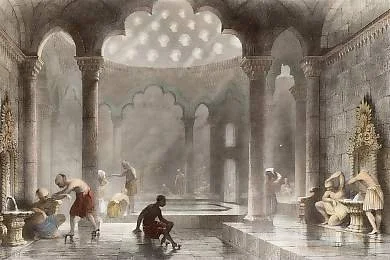
Hamam
(Middle East and North Africa)
Hamam – The Art of Cleansing and Stillness
The Hamam, often called the “Turkish bath,” is one of the world’s oldest wellness traditions — a ritual of cleansing, renewal, and connection. Evolving from ancient Roman and Byzantine bathhouses, the Hamam became an essential part of Middle Eastern and North African culture, where water and heat meet to purify the body and calm the mind.
A Journey Through Water and Heat
A Hammam visit follows a timeless rhythm: from warm to hot, then cool again. Guests are guided through a sequence of heated marble rooms where warm mist softens the skin, preparing it for deep cleansing.
The central ritual involves exfoliation with a kese glove, followed by a rich foam massage using natural olive-oil soap. Each stage is intentional — releasing physical tension and symbolic impurities.
More Than Cleansing
Beyond hygiene, the Hamam is a space of renewal and ritual. Traditionally, it served as a communal gathering place — where people shared stories, laughter, and silence. In many cultures, the Hammam was also a site for important life events such as bridal preparations, postpartum care, or spiritual purification before prayer.
Elements and Atmosphere
Every detail in the Hamam is designed to balance the senses. The warm stone benches, soft echoes of dripping water, and aromas of eucalyptus or rose create an experience that is both grounding and transcendent.
It is a sanctuary of stillness — where warmth slows the body, breath deepens, and time feels suspended.
Modern Hamam
Today, Hamams are found far beyond their origins, from traditional bathhouses in Istanbul to luxury spas across the world. While styles differ, the essence remains: heat, water, and human touch — used with care to restore equilibrium between body and soul.

